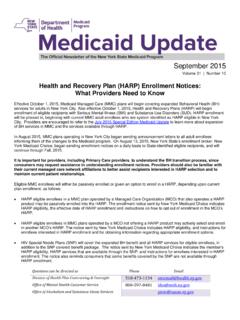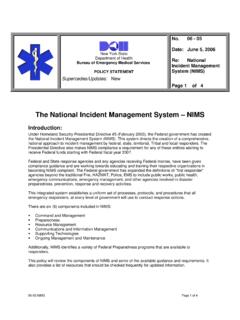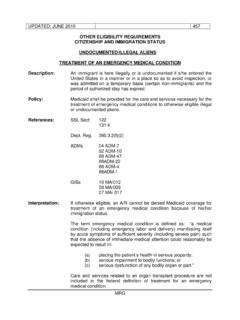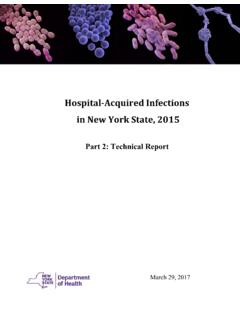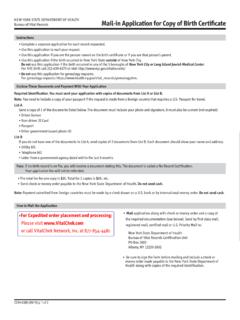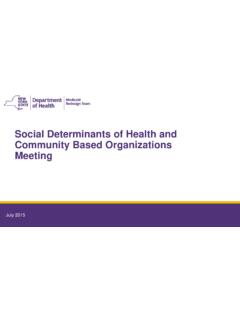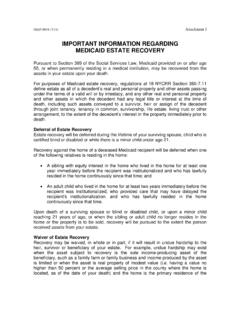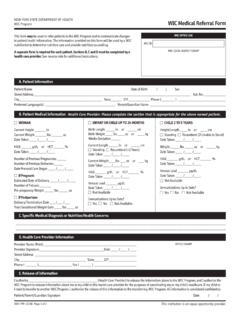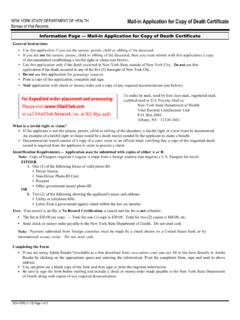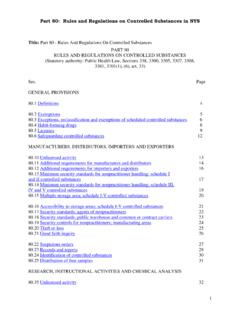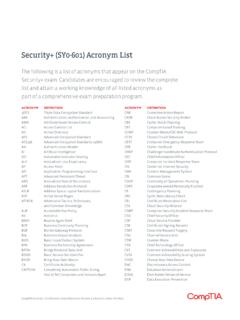Transcription of Ambulatory Patient Groups (APGs) Medicaid Fee-for-Service ...
1 Revised: December 29, 2021 Ambulatory Patient Groups (APGs) Medicaid Fee-for-Service Provider Manual Policy and Billing Guidelines 1 Table of Contents: 1 Background and Introduction to 3 Purpose .. 3 Overview of APG Reimbursement Methodology .. 3 APG Software .. 4 APG Types .. 5 APG Weights .. 5 Base Rates .. 6 Grouping .. 6 Bundling/Packaging .. 6 Capital Add-Ons .. 7 No Capital Add-On .. 7 Discounting .. 7 Significant Procedure Consolidation .. 7 Statewide Base Rates .. 8 Scope of 8 2 Reimbursement Components Affecting APGS .. 10 APG Fee Schedule .. 10 Procedure Based Weight.
2 10 Units of Service .. 10 Never Pay APG Procedures .. 11 If Stand Alone, Do Not Pay (ISADNP).. 11 11 3 APG Billing Guidance .. 12 APG Rate Codes .. 12 Visit and Episode Based APG Rate Codes .. 12 Incompatible Visit Types .. 13 Rate Codes Carved Out of APGs .. 14 Ambulatory Surgery Services .. 14 Physician-Administered Drugs under 14 Patient Encounters with a Registered Nurse or a Licensed Practical Nurse .. 17 National Correct Coding Initiative (NCCI) Edits .. 18 4 Supportive Services within APGS .. 19 Dental Billing .. 19 2 Observation Services (APG 450) .. 21 Mental Health Services Rendered by an LCSW or LMSW.
3 23 Expanded After Hours Access .. 23 Medicaid Managed Care Plans .. 24 Dually Eligible Medicare/ Medicaid Beneficiaries .. 24 5 Ancillary Services and Procedures .. 25 Ancillary Policy for D&TC Facilities .. 25 Recurring Physical, Occupational & Speech Therapies (APG 270, 271 & 272) .. 26 Radiology Services .. 26 Immunizations/Vaccines Provided to Medicaid Members Age 19 and Under .. 27 Immunizations/Vaccines Provided to Medicaid Members Age 19 and Older .. 28 Ordered Ambulatory Services .. 29 Family Planning Programs .. 30 Free Access to Family Planning Services for Managed Care 30 Federally Qualified Health Centers 30 6 Specialty Clinics.
4 32 Dialysis Services .. 32 HIV Designated AIDS Centers (HIV DAC) .. 32 Indian Health Centers .. 33 7 APG Contact 34 8 APG Glossary .. 34 3 Policy and Billing Guidance Ambulatory Patient Groups (APGs) 1 Background and Introduction to APGs Purpose The purpose of this manual is to provide the Medicaid policy and billing guidelines relative to the Ambulatory Patient Group (APG) classification and reimbursement methodology. Overview of APG Reimbursement Methodology APGs are a reimbursement classification system utilized for the reimbursement of a facility s cost of outpatient care. The fundamental basis of APG reimbursement is the categorization of the contact between the Patient and the health care professional.
5 The contact could be categorized by either a procedure, a medical evaluation and management (E&M), or an ancillary service. For each type of interaction, a prospective weight and price is established that includes all routine services ( , blood tests, chest X-rays, etc.) associated with the visit and/or procedure. The cornerstone premise of the APG methodology is that if the costs for all routine services rendered during a visit or a procedure were included in the reimbursement made to the facility, a financial incentive exists to control the volume and frequency of the services rendered to the Patient . APGs are designed to include all types of resources used during an Ambulatory or clinic visit, including but not limited to, professional services, pharmaceuticals, supplies, ancillary tests, equipment utilization, types of rooms, and treatment time.
6 APGs are designed to group procedures and medical visits that share similar resource utilization, and costs. Similar resource utilization means that the resources used for a procedure or medical visit are relatively constant across all patients assigned to an APG. The APG reimbursement methodology is designed to 4 predict the average pattern of resource utilization of a group of patients assigned to an APG. The level of resource utilization is taken into consideration in the calculation of the APG reimbursement made to the provider. In addition to resources utilization, patients classified within each APG also share similar clinical characteristics as well.
7 Similar clinical characteristics are utilized within the APG classification system to categorize the reimbursement of services as they relate to a common organ system or etiology. The clinical characteristics determine the specific medical specialty that should typically provide care to the patients within the specific APG group, as well as the level of Ambulatory resources needed to render care. Furthermore, the APG reimbursement methodology takes into consideration the amounts and types of resources used during a visit and is adjusted based on the level of intensity of the services rendered. Reimbursement is made based on the Patient s diagnosis, symptoms and acuity, and APGs then systematically package the costs of certain, associated ancillary labs and/or radiology services into the overall reimbursement of the associated significant procedure or medical visit to the facility.
8 Overall, APGs are designed to reimburse facilities based on the clinical characteristics of the Patient , service level intensity, and resource utilization of the procedures conducted and/or medical visit. APG Software APGs are classified and reimbursed using a software developed and published by 3M Health Information Systems (3M). The 3M Grouper Pricer software is used to apply any appropriate grouping, bundling, packaging, and discounting logic in order to calculate a final APG weight, and allowed reimbursement amount. Each procedure and diagnosis coded for a Patient visit will result in a list of APGs that correspond on a one-for-one basis with each procedure coded for the visit.
9 Providers may wish to obtain a copy of the 3M APG Definition manual to understand how Current Procedural Terminology (CPT) codes map to APGs. The APG Definitions Manual and Grouper Pricer software is available through 3M s Website. A review of the 3M Grouper Pricer terminology or logic concepts used in the adjudication of APG claims is referenced below. 5 APG Types The Medicaid APG reimbursement methodology classifies and assigns any procedure code submitted for reimbursement into these main categories: significant procedure, medical visit, ancillary procedure classification, incidental, or unassigned. The reimbursement under APGs is driven by this classification methodology.
10 Significant Procedures A significant procedure is a procedure that constitutes the primary reason for the visit and dominates the time and resources expended during the visit. Medical Visits A medical visit is an encounter in which a Patient receives medical treatment but does not have a significant procedure performed. Evaluation and management (E&M) codes are assigned to one of the medical visit APGs based on the primary diagnosis reported on the claim. Ancillary Tests and Procedures Ancillary tests and procedures are services ordered to assist in the Patient s diagnosis or treatment. Incidental Procedures An integral part of a medical visit usually associated with professional services being given to the Patient .
